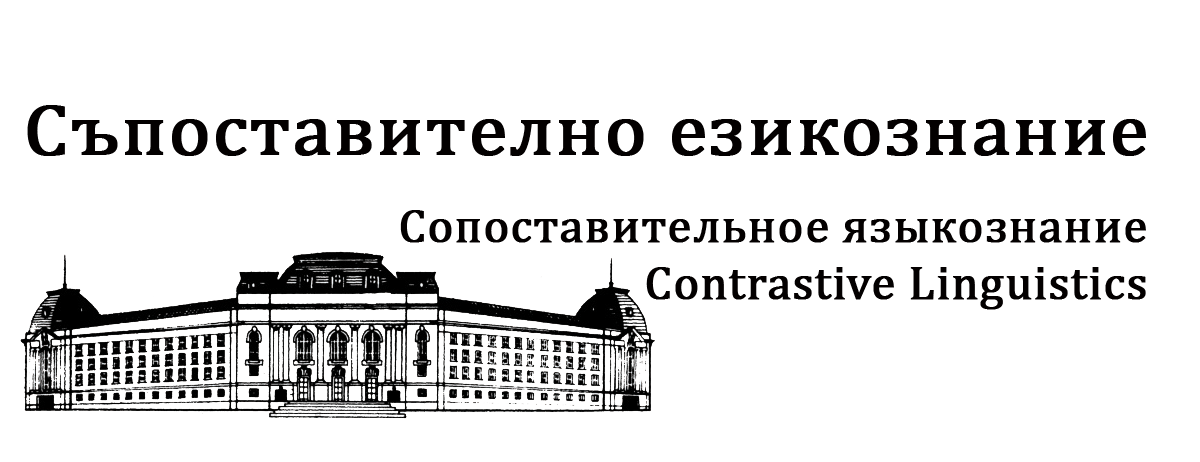Съдържанието можете да изтеглите оттук. Отговорни редактори на броя: Александра Багашева и Венсан Ренер Съдържание Александра Багашева, Венсан Ренер – Предговор // 3 Ramon Martí Solano (Limoges) and Maria Kolarova…
Категория: Архив
2015 (ХL), № 2
Съдържанието можете да свалите оттук. Съдържание Съпоставителни изследвания Юлияна Стоянова (София) –Показателни местоимения и местоименнинаречия в ранната онтогенеза: полско-български паралели // 5 Стилиян Стойчев (София) – Функционално-семантичните микрополета на резултативността…
2015 (ХL), № 1
Съдържанието можете да изтеглите оттук. Съдържание Съпоставителни изследвания Zlatka Guentchéva (Paris) – L’aoriste et les notions d’événement et de borne dans le système verbal des langues balkaniques // 5 Христина…
2014 (ХХХІХ), № 4
Съдържанието можете да свалите оттук. Съдържание Съпоставителни изследвания Мария Зозикова (Пловдив) – О природе и функциях отглагольных образований на -м(ый) и -м в русском и болгарском языках // 5 Айля…
2014 (ХХХІХ), № 3
Съдържанието можете да свалите оттук. Съдържание Съпоставителни изследвания Борян Янев (Пловдив) – За образните сравнения, разкриващи психичните свойства на човека (българско-английски паралели) // 5 Румяна Тодорова (Шумен) – Приятели, приятелство…
2014 (ХХХІХ), № 2
Съдържанието можете да изтеглите оттук. Съдържание Съпоставителни изследвания Liliane Tasmowski (Anvers / Bruxelles) – Du déterminant au discours en passant par le verbe // 5 Теория и практика на превода…
2014 (ХХХІХ), № 1
Съдържанието можете да свалите оттук. Съдържание Съпоставителни изследвания Неля Иванова (Бургас), Анна Андриенко (Ростов-на-Дону, Россия) – Концепт „успех“ в ценностном и языковом измерениях в болгарской, русской, британской и американской лингвокультурах…
2014 – Съпоставително езикознание
2014 (ХХХІХ), № 1 2014 (ХХХІХ), № 2 2014 (ХХХІХ), № 3 2014 (ХХХІХ), № 4
2013 (ХХХVIII), № 4
Съдържанието и резюметата на статиите можете да изтеглите оттук. Съдържание Съпоставителни изследвания Маргарита Младенова (София) – Граматикализирани употреби на глаголите от семантичното поле на притежанието в славянските езици // 5…
